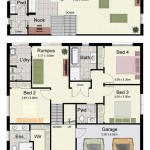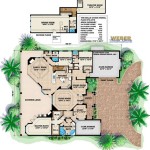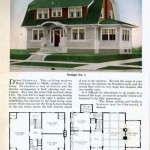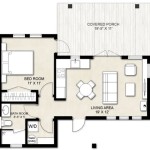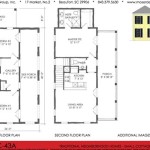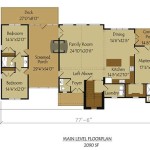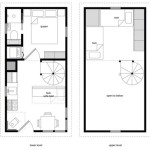Cost Effective House Plans refer to architectural designs that prioritize affordability and optimize resource utilization to minimize construction and maintenance expenses. These plans are designed to cater to the needs of individuals or families seeking to build or remodel homes within a reasonable budget.
For instance, a cost-effective house plan might incorporate energy-efficient features such as proper insulation, energy-saving appliances, and natural lighting to reduce utility costs. It may also utilize sustainable materials, optimize space planning to reduce unnecessary square footage, and employ design techniques that minimize labor and material waste.
In the following sections, we will explore various aspects of cost-effective house plans, providing practical tips and insights to assist you in designing or selecting a home that aligns with your financial goals.
To achieve cost effectiveness, consider these key points when planning your home:
- Optimize space planning
- Employ energy-efficient features
- Utilize sustainable materials
- Minimize construction waste
- Consider prefabricated components
- Explore DIY options
- Negotiate with contractors
- Seek professional advice
By incorporating these principles, you can create a cost-effective house plan that meets your needs without compromising quality or comfort.
Optimize space planning
Optimizing space planning is a crucial aspect of creating a cost-effective house plan. By maximizing the use of available space and minimizing unnecessary square footage, you can significantly reduce construction and maintenance costs.
Here are some key strategies for optimizing space planning in your home design:
- Create a compact and efficient floor plan. Avoid sprawling or overly complex designs that waste space on hallways, foyers, and other underutilized areas. Instead, opt for a simple and well-organized floor plan that flows smoothly from one room to the next.
- Utilize multi-purpose spaces. Design rooms that can serve multiple functions, such as a guest room that doubles as a home office or a dining room that can also be used for entertaining guests.
- Maximize vertical space. Use built-in shelves, lofts, and other vertical storage solutions to store items and free up floor space. Consider using bunk beds or trundle beds to accommodate multiple children in a single bedroom.
- Choose furniture wisely. Select furniture that is both functional and space-saving. Look for pieces that can be used for multiple purposes, such as ottomans with built-in storage or chairs that can be folded away when not in use.
By following these tips, you can create a cost-effective house plan that is both spacious and efficient.
Employ energy-efficient features
Incorporating energy-efficient features into your house plan can significantly reduce your utility costs and make your home more comfortable to live in. Here are some key energy-efficient features to consider:
- Proper insulation. Insulation helps to keep your home warm in the winter and cool in the summer, reducing the amount of energy needed to heat and cool your home. Choose insulation with a high R-value, which measures the resistance to heat flow.
- Energy-efficient windows and doors. Windows and doors are a major source of heat loss in a home. Choose energy-efficient windows and doors that have low U-factors and high R-values. U-factor measures the rate of heat loss through a window or door, while R-value measures the resistance to heat flow.
- Energy-efficient appliances. Appliances such as refrigerators, dishwashers, and washing machines can use a significant amount of energy. Choose appliances with the ENERGY STAR label, which indicates that they meet certain energy-efficiency standards.
- Efficient lighting. Lighting can account for a significant portion of a home’s energy use. Use energy-efficient lighting fixtures and bulbs, such as LED or CFL bulbs, which use less energy than traditional incandescent bulbs.
By incorporating these energy-efficient features into your house plan, you can create a more comfortable and cost-effective home.
Utilize sustainable materials
Sustainable materials are materials that are produced and used in a way that minimizes their environmental impact. Using sustainable materials in your house plan can help to reduce the cost of building and maintaining your home, while also creating a healthier and more environmentally friendly living space.
Here are some key types of sustainable materials to consider for your house plan:
- Recycled materials. Recycled materials, such as recycled steel, aluminum, and glass, can be used to create a variety of building materials, such as siding, roofing, and insulation. Using recycled materials can help to reduce the demand for new materials and conserve natural resources.
- Renewable materials. Renewable materials, such as wood, bamboo, and cork, are materials that can be replenished naturally. Using renewable materials can help to reduce the impact of your home on the environment.
- Low-VOC materials. VOCs (volatile organic compounds) are chemicals that are emitted from many building materials, such as paint, flooring, and furniture. VOCs can contribute to indoor air pollution and health problems. Choose low-VOC materials to create a healthier indoor environment.
- Locally sourced materials. Using locally sourced materials can help to reduce the transportation costs and environmental impact associated with building your home. Look for materials that are produced in your area to minimize the distance they need to be transported.
By incorporating sustainable materials into your house plan, you can create a more cost-effective, environmentally friendly, and healthier home.
Minimize construction waste
Construction waste is a major problem in the construction industry. It is estimated that 25-40% of all construction materials end up in landfills. This waste not only takes up valuable landfill space, but it also contributes to environmental pollution. Minimizing construction waste is an important way to reduce the cost of building a home and to protect the environment.
- Plan carefully. One of the best ways to minimize construction waste is to plan carefully. This includes creating a detailed design for your home and selecting materials carefully. By planning ahead, you can avoid mistakes that could lead to waste.
- Use prefabricated materials. Prefabricated materials are materials that are manufactured off-site and then assembled on-site. Using prefabricated materials can help to reduce construction waste because they are cut to size and there is less waste from packaging. Prefabricated materials typically cost less to install as well.
- Recycle and reuse materials. Many construction materials can be recycled or reused. For example, scrap wood can be used to build sheds or fences. Recycling and reusing materials can help to reduce the amount of waste that goes to landfills.
- Hire a waste management company. A waste management company can help you to dispose of construction waste properly. They can also help you to recycle and reuse materials. Hiring a waste management company can help to reduce the cost of waste disposal and to protect the environment.
By following these tips, you can minimize construction waste and build a more cost-effective and environmentally friendly home.
Consider prefabricated components
Prefabricated components are building materials that are manufactured off-site and then assembled on-site. Using prefabricated components can help to reduce the cost of building a home and to speed up the construction process.
There are a variety of different types of prefabricated components available, including walls, roofs, floors, and even entire homes. Prefabricated components are typically made from high-quality materials and are designed to meet the same building codes as site-built homes.
One of the biggest advantages of using prefabricated components is that they can help to reduce construction waste. Prefabricated components are cut to size and there is less waste from packaging. This can help to save money on waste disposal costs and to reduce the environmental impact of your home.
Another advantage of using prefabricated components is that they can help to speed up the construction process. Prefabricated components are typically assembled on-site, which can save time compared to traditional construction methods. This can help to reduce the overall cost of building your home and to get you into your new home sooner.
If you are considering building a new home, be sure to explore the option of using prefabricated components. Prefabricated components can help you to save money, speed up the construction process, and reduce the environmental impact of your home.
Explore DIY options
DIY (do-it-yourself) options can be a great way to save money on your house plan. There are a number of tasks that you can do yourself, even if you don’t have a lot of experience in construction. With a little planning and effort, you can complete many of the tasks involved in building a home, such as:
- Framing. Framing is the process of creating the basic structure of a home. This can be a challenging task, but it is also one of the most important. If you are not comfortable framing a home yourself, you can hire a contractor to do this task for you.
- Plumbing. Plumbing is the process of installing and maintaining the pipes that carry water and gas throughout a home. This can be a complex task, but it is also one that can be learned with some effort. If you are not comfortable plumbing a home yourself, you can hire a contractor to do this task for you.
- Electrical. Electrical work is the process of installing and maintaining the electrical wiring in a home. This can be a dangerous task, so it is important to have some experience before attempting it. If you are not comfortable doing electrical work yourself, you should hire a contractor to do this task for you.
- Finishing. Finishing work includes tasks such as painting, drywalling, and installing flooring. These tasks can be time-consuming, but they are also relatively easy to learn. With a little effort, you can complete most of the finishing work on your home yourself.
If you are considering building a home, be sure to explore the option of doing some of the work yourself. DIY options can be a great way to save money and to get involved in the construction process.
Here are some additional tips for exploring DIY options for your house plan:
- Start small. If you are new to DIY, start with small projects that you can complete in a short amount of time. This will help you to build confidence and skills that you can use on larger projects later on.
- Do your research. Before starting any DIY project, be sure to do your research and learn as much as you can about the task. There are a number of resources available online and at your local library that can help you to learn about DIY projects.
- Get help from friends and family. If you are not sure how to complete a task, don’t be afraid to ask for help from friends and family. Many people are willing to lend a helping hand, and they can often provide valuable advice.
- Don’t be afraid to make mistakes. Everyone makes mistakes when they are first starting out. The important thing is to learn from your mistakes and to keep trying.
With a little planning and effort, you can complete many of the tasks involved in building a home yourself. DIY options can be a great way to save money and to get involved in the construction process.
Negotiate with contractors
Negotiating with contractors is an important part of getting the best possible price for your house plan. Here are a few tips to help you negotiate effectively:
- Get multiple bids. The best way to get a good price is to get multiple bids from different contractors. This will give you a range of prices to compare and help you to identify the best value.
- Be prepared to walk away. If you are not happy with the bids you receive, be prepared to walk away from the project. There are other contractors out there who may be willing to give you a better price.
- Negotiate the price. Once you have found a contractor that you are comfortable with, be prepared to negotiate the price. Be willing to compromise on some things in order to get the best possible price.
- Get everything in writing. Once you have reached an agreement with a contractor, be sure to get everything in writing. This will protect you in case there are any disputes later on.
Here are some additional tips for negotiating with contractors:
- Be realistic. Don’t expect to get a contractor to work for free. Be prepared to pay a fair price for their services.
- Be respectful. Contractors are people too. Treat them with respect and they will be more likely to work with you.
- Be prepared to compromise. You may not get everything you want in a negotiation. Be prepared to compromise on some things in order to get the best possible deal.
By following these tips, you can negotiate effectively with contractors and get the best possible price for your house plan.
Here are some additional things to keep in mind when negotiating with contractors:
- The size of the project. The size of the project will have a big impact on the price. A larger project will typically cost more than a smaller project.
- The complexity of the project. A complex project will typically cost more than a simple project. This is because complex projects require more time and expertise to complete.
- The location of the project. The location of the project will also affect the price. Projects in remote areas will typically cost more than projects in urban areas. This is because contractors have to travel further to get to remote areas.
- The availability of contractors. The availability of contractors will also affect the price. If there is a high demand for contractors in your area, you may have to pay more for their services.
By understanding these factors, you can be better prepared to negotiate with contractors and get the best possible price for your house plan.
Seek professional advice
Consulting with a professional can provide valuable insights and guidance throughout the design and construction process of your cost-effective house plan. Here are some key benefits of seeking professional advice:
- Expertise and experience: Architects and engineers possess specialized knowledge and experience in designing and constructing homes. They can help you navigate building codes, optimize space planning, and select materials that align with your budget and sustainability goals.
- Objectivity and unbiased advice: Professionals can provide objective assessments of your plans and offer unbiased recommendations based on their expertise. They can help you avoid costly mistakes and ensure that your home is both cost-effective and functional.
- Access to resources and contractors: Architects and engineers often have established relationships with reliable contractors and suppliers. They can assist you in finding the right professionals for your project and negotiating favorable terms.
- Long-term savings: While professional fees may seem like an upfront cost, they can ultimately save you money in the long run. By avoiding costly mistakes and optimizing your design, you can minimize construction expenses and reduce future maintenance costs.
Consider consulting with a professional architect or engineer early in the planning phase of your cost-effective house plan. Their expertise can help you create a home that meets your needs, aligns with your budget, and provides long-term value.










Related Posts

